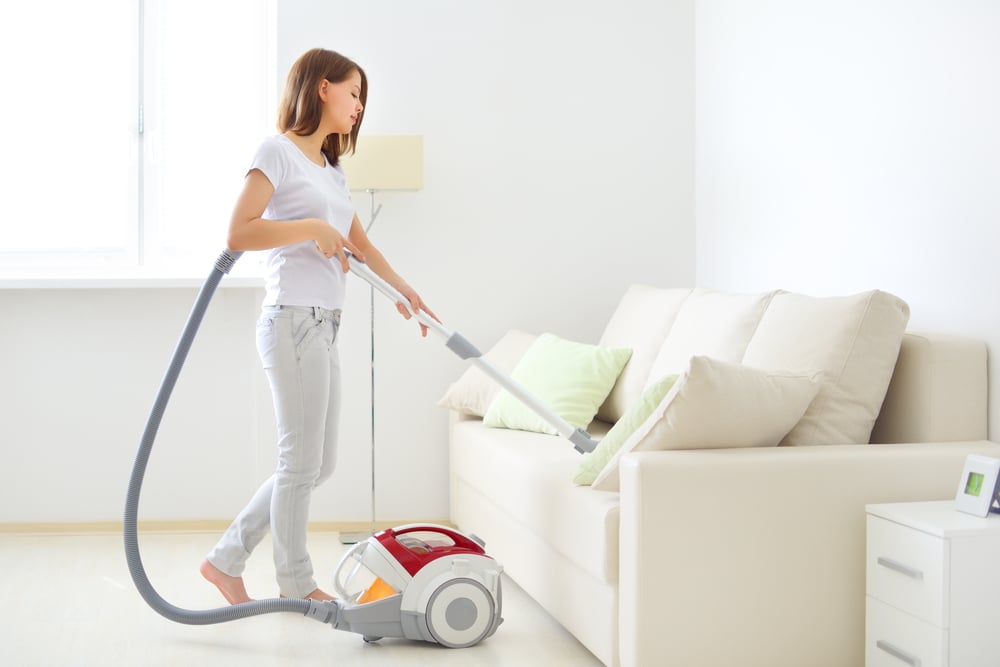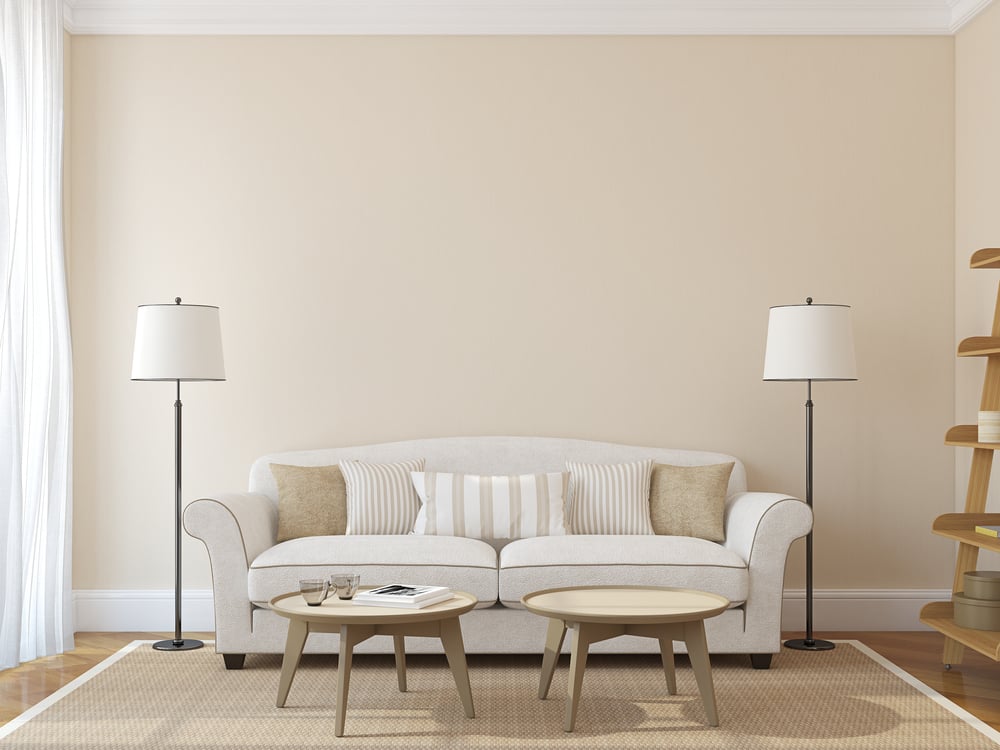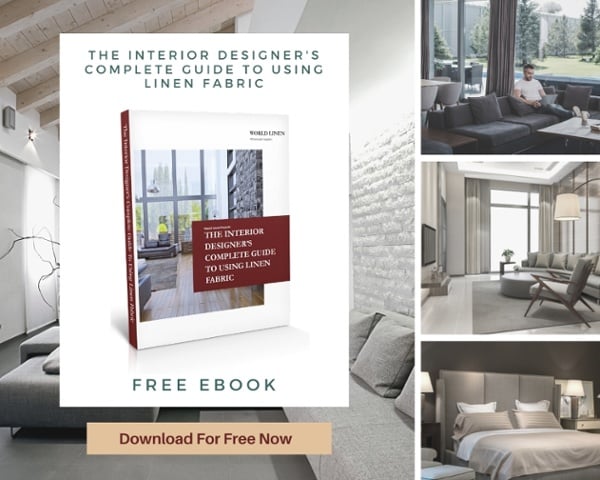If you’re searching for an upholstery fabric, it’s important to weigh the pros and cons of any important purchase that can make or break your project.
Linen fabric is a great choice for furniture because of its durability and fresh look. However, to be certain linen is right for your project, it’s important to evaluate all the pros and cons of using this fabric.
Upholstery Care
Pros
 Linen upholstery fabric overall is extremely easy to care for. In fact, customers can clean slipcovers in their homes simply using a washing machine and dryer. Linen fabric can also be washed by hand or taken to the dry cleaners, depending on a buyer’s preference.
Linen upholstery fabric overall is extremely easy to care for. In fact, customers can clean slipcovers in their homes simply using a washing machine and dryer. Linen fabric can also be washed by hand or taken to the dry cleaners, depending on a buyer’s preference.
An important note to remember when caring for your slipcovers is to place the slipcover back on when it is damp to prevent shrinkage. Remembering to do this will keep your slipcovers a staple of your decor for years to come.
Our article, How To Wash Linens, outlines the easy process of washing linen fabric, including how to wash, dry and press the fabric.
Cons
While caring for linen upholstery fabric is pretty straightforward, there are a few things to keep in mind to prevent damage. While bleaching is acceptable in other fabrics, bleaching is not recommended for linens. That’s because bleaching can discolor the fabric, as well as weaken the flax fibers used to construct linen upholstery.
It’s also important not to twist or scrub the fabric since these actions can damage the fibers as well.
Finally, linen is not stain-resistant. However, linen can be spot cleaned. It’s important to try to remove the stain as soon as possible. Soak the stain with a solution made of water and detergent. You can also spot clean the fabric with club soda, baking soda or even a small amount of white vinegar, followed by blotting the stain with a towel.
Fabric Shrinkage
Pros
While linen upholstery fabric is easy to care for, shrinkage can occur. However, the good news is that it’s easy to avoid. When caring for your slipcovers, place the slipcover back on when it is damp. Avoid using high heat when washing or drying your slipcover as well.
Do this, and your slipcovers will remain a staple of your decor for years to come.
Cons
Forget to change the heat settings or grab the slipcover out of the dryer before it is fully dried, and fabric shrinkage may occur. To help prevent this, set a timer, or get into a routine of always checking the temperature setting of the washer and dryer with every load.
Wrinkle Management
Pros
 Linen has a reputation for wrinkling easily, especially after being washed. The good news is, combating wrinkles is pretty easy when it comes to linen upholstery.
Linen has a reputation for wrinkling easily, especially after being washed. The good news is, combating wrinkles is pretty easy when it comes to linen upholstery.
If linens are pre-washed, you can place them in the dryer on low heat to help remove some wrinkles. However, make sure you remove the linens while they are still somewhat damp. You can also turn your iron to its low to medium-hot setting and iron the linen upholstery fabric while it is still damp. Another alternative is placing a dampened towel over top the piece of linen before ironing.
Cons
Wrinkles can cause a minor inconvenience. However, you’ll likely encounter this with many types of fabrics used to create upholstery, including cotton, rayon, and acetate.
Lifespan
Pros
Linen fabric is very durable. That’s due to the strong natural flax fibers used to construct it.
Linen also ages well, and in fact, gets softer even after it is cleaned repeatedly. While other fabrics show wear and tear after multiple uses, this isn’t the case with linen.
Cons
As a designer, the durability of linen is a major selling point. However, if your clients like to frequently switch out their slipcovers or furnishings, durability might not be a top priority.
Impact On The Environment
Pros
Linen is extremely sustainable - more so than most fabrics. And today, many consumers are looking for sustainable products.
When growing flax, very little water is required. Therefore, farmers do not need to irrigate or fertilize during this process. Flax typically requires fewer pesticides, herbicides, and fungicides as well.
Even once a flax plant is harvested, very little is wasted. Its seeds, for example, can be used to produce oil or can be eaten as a food source. Even when the upholstery is no longer needed, it is biodegradable.
Cons
There simply aren’t any cons when it comes to this luxurious fabric and its impact on the environment.
Other Pros And Cons
Pros
 Linen is considered to be one of the most comfortable fabrics, making it a logical choice for upholstery fabric. This is due to the fact that:
Linen is considered to be one of the most comfortable fabrics, making it a logical choice for upholstery fabric. This is due to the fact that:
- Linen is moisture resistant. It can absorb dampness up to 20% without even feeling wet. This is especially beneficial in high humid climates.
- Bacteria do not easily grow in linen. Linen’s moisture resistance helps protect the material against bacterial growth, which can occur when a material experiences hidden dampness.
- Linen is hypoallergenic. Flax is considered a natural fiber. It is friendly to a person’s skin and is perfect for allergy sufferers.
- Linen is breathable. Linen will keep an individual cool in the summer while providing warmth in the winter. Linen’s breathability also helps the body regulate its temperature, perfect for a good night’s rest.
Cons
One of the only cons that one might consider is price. Fabrics like cotton are generally less expensive than linen. That’s because the production behind linen is more comprehensive and has a lot to do with geography.
Flax must be grown in optimal weather conditions, which ideally is in Belgium, France and the Netherlands. Because the cost of labor and production can be higher in this region, those costs are transferred to the consumer. Harvesting a flax plant is also a time-intensive process, taking as long as 90 to 100 days. The weaving process can be slow, however, since experienced machinery operators take great care with the fabric.
However, working with the right fabric supplier can help you manage your costs. It’s also important to keep in mind that you’re getting a very high-quality fabric in linen upholstery - one that is durable, comfortable and luxurious all in one.
Important Final Note
Now that you’ve evaluated the pros and cons of linen upholstery fabric, there’s one more thing you should keep in mind that could be either a pro OR a con … the linen supply company you choose.
It is critical to choose a linen supplier that emphasizes quality and prioritizes you as a partner. No matter how great linen upholstery fabric may be for your project, if you work with a supplier that doesn’t have your best interest in mind, your experience could be the worst part of your purchase.
When choosing a linen supplier, look for one that:
- Is domestic, since there can be several challenges to working with a linen supplier overseas, from communication challenges to potential issues that could delay products at customs.
- Meets your deadline, even if you request custom dyeing and print services.
- Has the quantity of fabric you need to fulfill your project.
- Will provide references so you can hear about other companies’ experiences.
For more tips on what to look for in a partner for your business, check out our article, What To Look For In A Linen Supplier.







I’m getting my house renovated next month, but I decided to get reupholstery for my furniture instead of buying new ones to save money. I appreciate you informing us that shrinkage may occur if we do upholstery on linen fabric but we can avoid this if we don’t use high heat when washing or drying the slipcover. I’ll keep this in mind while I look for a reupholstery service to hire for help soon. https://regallv.com/upholstery-and-reupholstery-in-las-vegas/